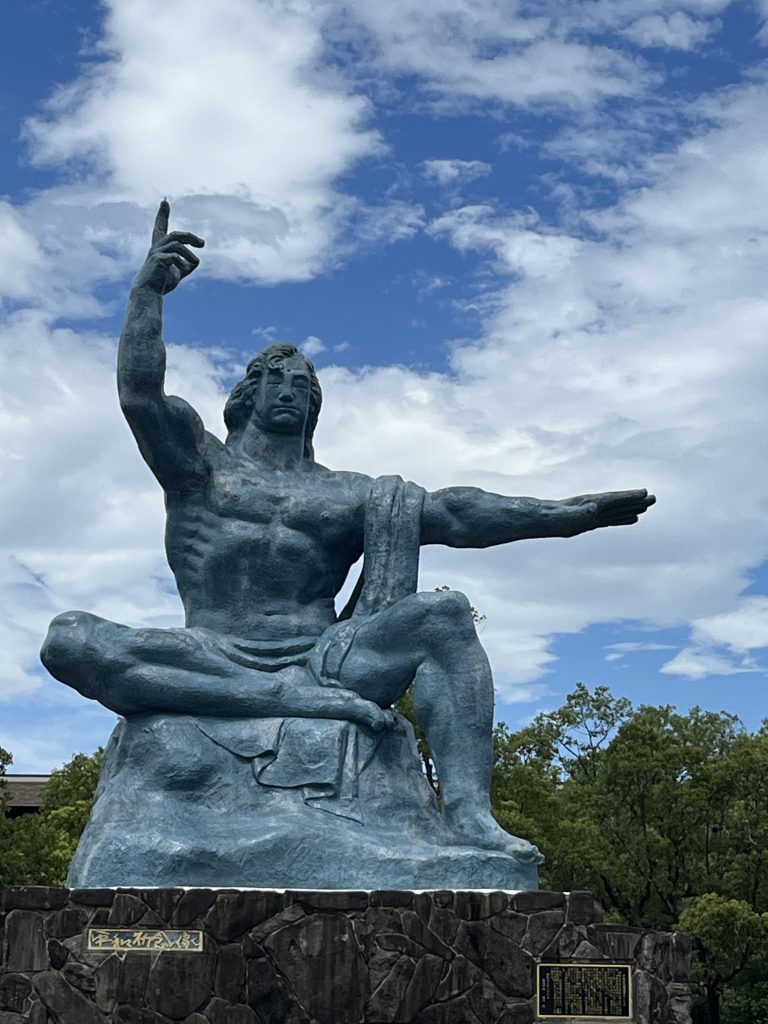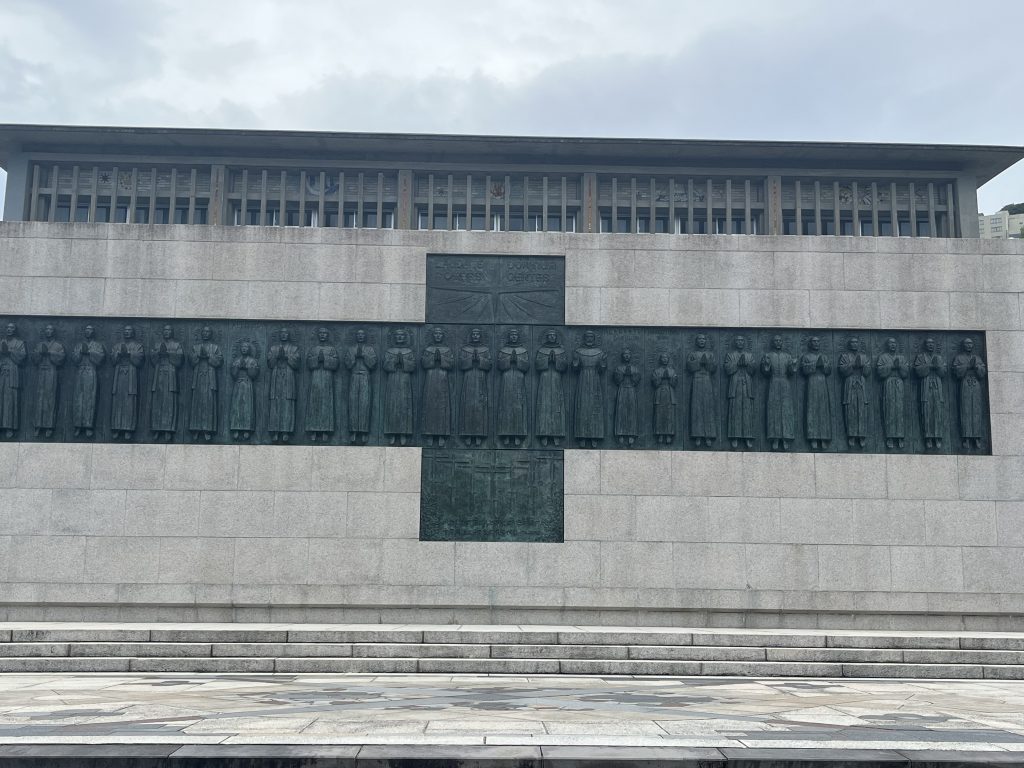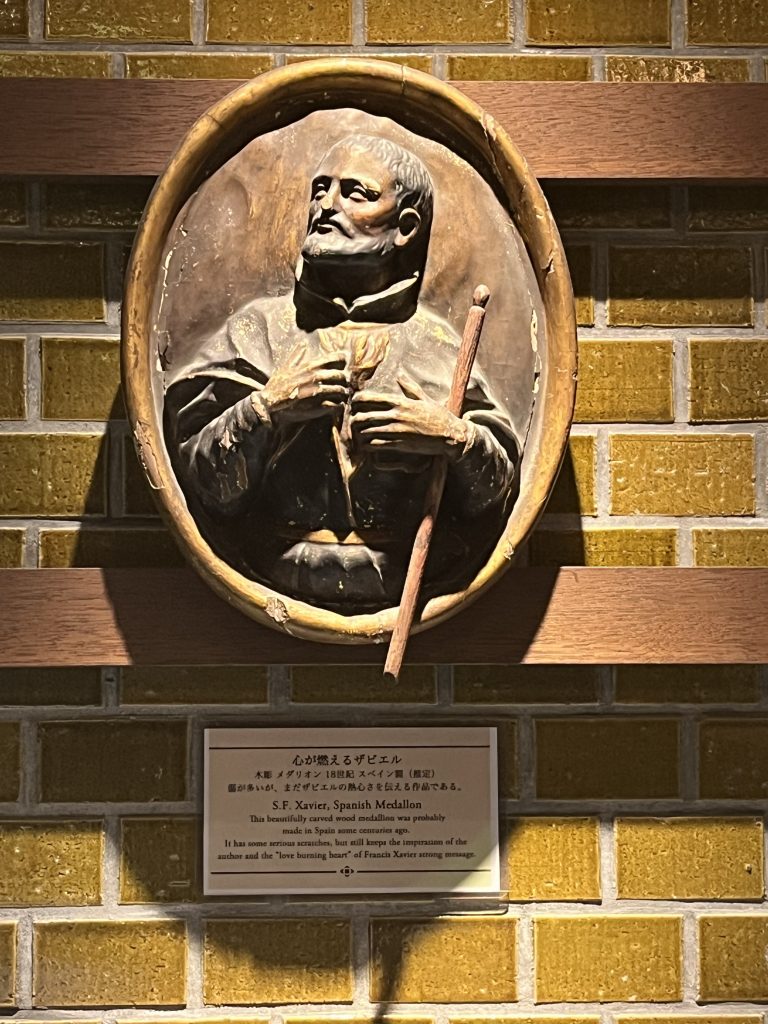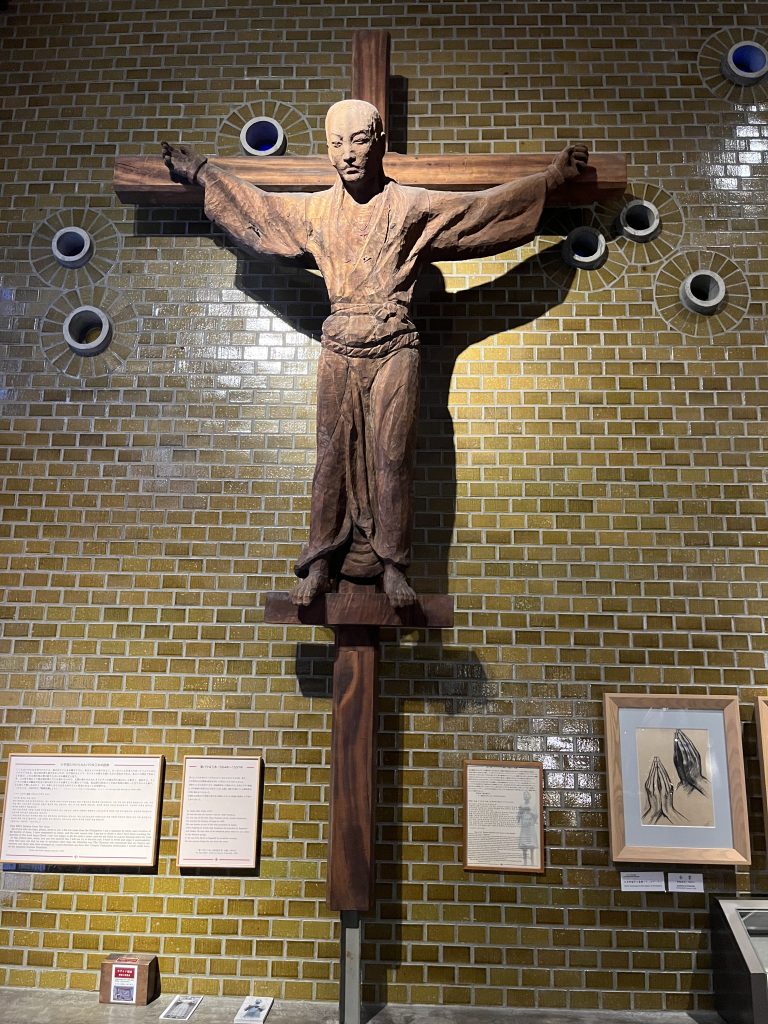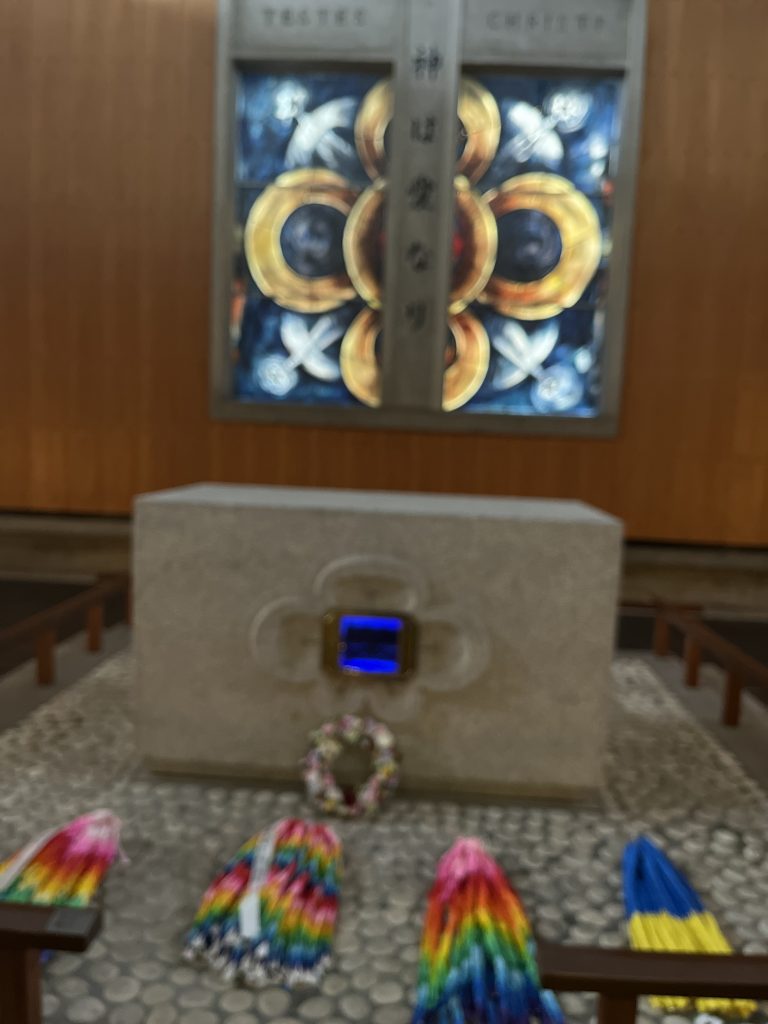On this 9th and final day of our Pilgrimage of Peace to Japan is the 78th anniversary of the atomic bombing of Nagasaki. Clocks that day stopped at 11:02, marking the time of the detonation. Our final official act on this pilgrimage will take place in the Cathedral at 11:00 when we will celebrate Mass with a few of the local parishioners. The larger Archdiocesan Mass for this evening has been canceled due to the arrival of a typhoon.
Yesterday, we spent two hours in the morning discussing our desire to build a relationship between our four Arch/Dioceses to further advance the cause of peace and the elimination of nuclear weapons. We will gather again to further refine our desires and goals, and hope to release a preliminary sketch on this anniversary date of what we are ready at this time to announce.
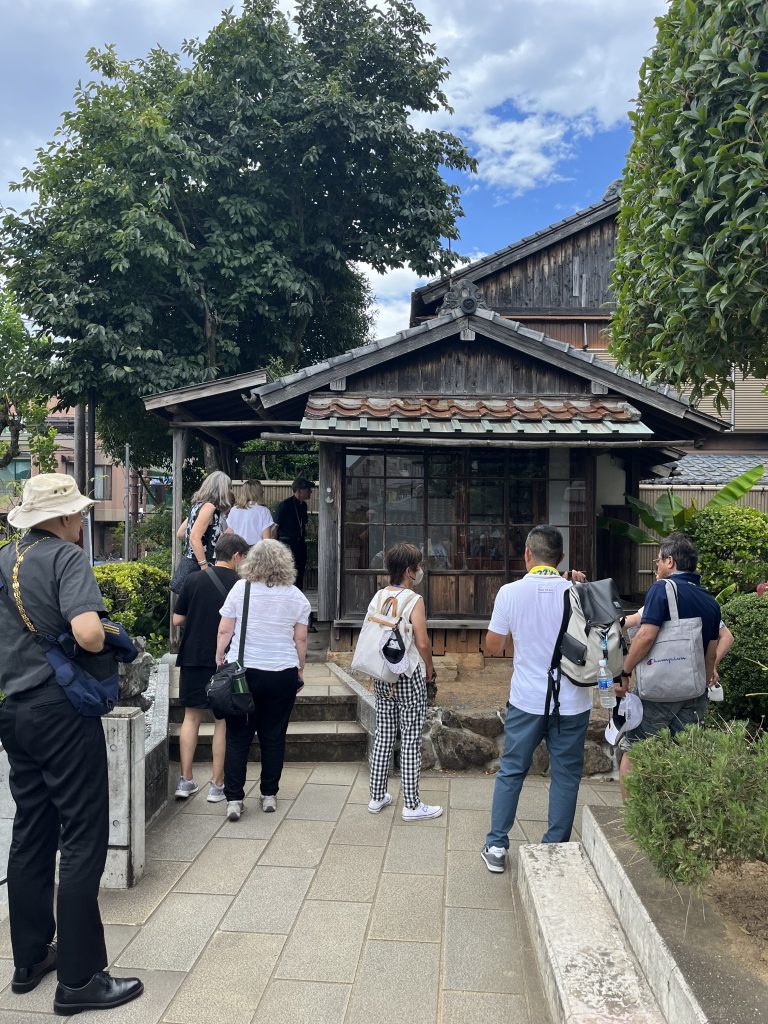 In the afternoon, we had a few hours to explore the hypocenter of the atomic blast of 1945 and the nearby museum recalling the tragic loss of life. Prior to that, we first stopped at the small home of perhaps one of the most famous survivors of the Nagasaki bombing, Dr. Takashi Nagai. He and his wife had sent their children earlier into the hills for their safety. Sadly, Dr. Nagai’s wife died in the bombing.
In the afternoon, we had a few hours to explore the hypocenter of the atomic blast of 1945 and the nearby museum recalling the tragic loss of life. Prior to that, we first stopped at the small home of perhaps one of the most famous survivors of the Nagasaki bombing, Dr. Takashi Nagai. He and his wife had sent their children earlier into the hills for their safety. Sadly, Dr. Nagai’s wife died in the bombing.
After the bombing, Dr. Nagai worked selflessly caring for the many victims. He was specializing in radiology due to the severity of tuberculosis in Japan in those days. After the war, X-Ray paper was hard to come by, so he began reading the results during the exams. Sadly, he suffered from over exposure, and died within a few months. During that time, he wrote profusely, and profoundly on the madness of war and the need to end the use of weapons of mass destruction. Perhaps one of his most famous books is The Bells of Nagasaki, which I hope to read on the way home.
We then made our way to the Peace Memorial Park and the nearby Atomic Bomb Museum. It is very difficult to take in all that is contained in these places. The images and stories, the history of the development of the atomic bomb and the devastation these two bombs in two cities caused. War accomplishes nothing, and destroys what it seeks to achieve. Indiscriminate killing of civilians, elderly, young, men and women, is so immoral. As Dr. Nagai said in his writings:
We know that it is a grave sin for one person to kill another, but why is it justified in a war in which a group of people kill each other in large numbers?
A war called justice, War for peace,
Do such words have absolute truth?
Our final stop for the afternoon was the place where twenty six Catholics were martyred on February 5, 1597. They were 20 Japanese, 4 Spaniards, and Indian born of Portuguese family and a Mexican. Since 1640, the Christians of Nagasaki area had endured about 250 years of persecution. Amazingly, they kept the faith alive all those years, hidden and refusing to denounce the faith, it was preserved and handed down generation after generation,
These ‘hidden Christians’ resurfaced after 1865 when a Catholic Church was erected, Oura Church, and they came to visit Fr. Petitjean to confirm that indeed, Catholic priests had returned to Japan. However, a new persecution would soon begin in 1868 and continue until 1873.
The Jesuits have a small church here, and a very impressive museum to tell the story of these martyrs and their message of faith. It tells the story of the faith from the time of the arrival of St. Francis Xavier August 15, 1549. If you are ever in Nagasaki, this is a must see stop.
We concluded our visit here by praying our Novena near the altar and small area which holds the relics of these many martyrs of the faith.
10